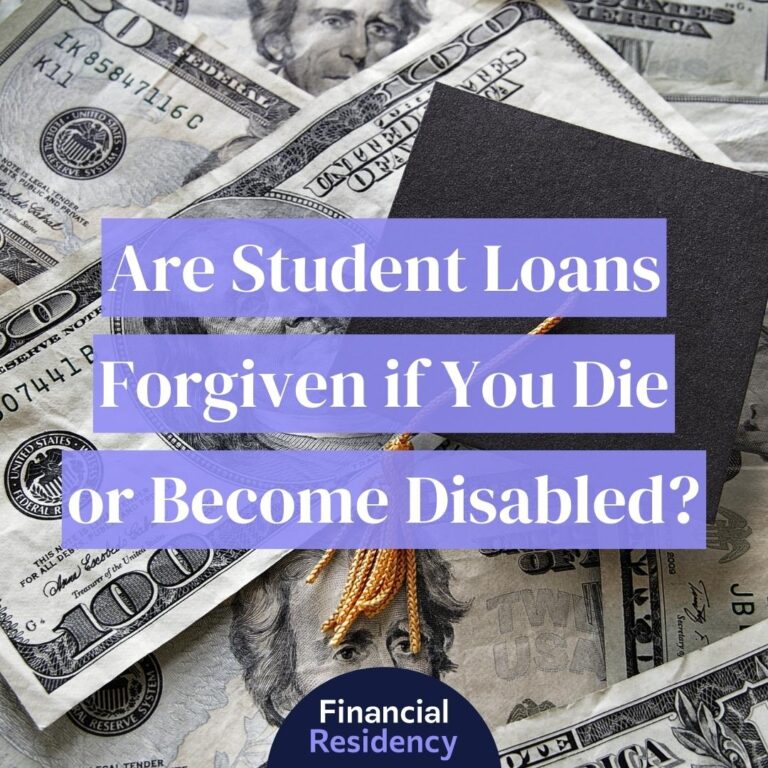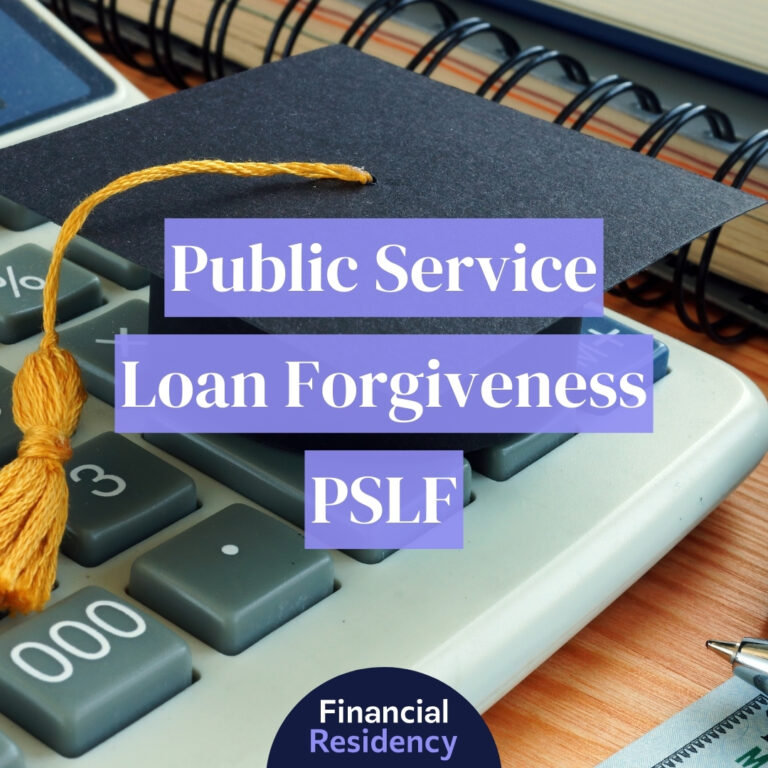Becoming a physician requires an extensive education that can leave many med school grads with a significant amount of student debt.
According to the Association of American Medical Colleges (AAMC), the average medical student graduates with more than $200,000 in student loan debt.
While repaying student debt might seem like a daunting task, there are several tried and true strategies you can implement to make repayment manageable.
Read on to learn how to pay off medical school debt, from revised repayment plans to forgiveness programs and extra payments.
9 Strategies For Paying Off Medical School Debt
Financial stress is one of the top contributors to burnout and mental health challenges in the healthcare industry. However, medical school loans don’t have to snowball out of control.
Here are our top strategies for repaying medical school debt and reaching financial freedom.
- Seek Out Student Loan Forgiveness Programs
- Consider Student Loan Repayment Programs
- Look Into an Income-Driven Repayment Plan
- Use Your Signing Bonus to Pay Down Debt
- Max Extra Payments
- Start Making Payments During Residency
- Refinance for a Better Interest Rate
- Consolidate Federal Student Loans
- Optimize Your Finances
1. Seek Out Student Loan Forgiveness Programs
State, local, and federal entities offer student loan forgiveness programs for physicians who work in the government or non-profit sector. Each program has its qualifying terms, so it’s important to do your research to confirm you qualify.
Here are some notable student loan forgiveness program options to consider.
- Public Service Loan Forgiveness: Public Service Loan Forgiveness (PSLF) is restricted to people who work in public service. It’s open to physicians who work full-time for a non-profit organization or local, state, and federal government. Applicants must have made 120 on-time monthly payments and have Direct loans on an income-driven repayment plan while working for a qualifying employer.
- State-Specific Loan Forgiveness: Most states offer some kind of medical loan forgiveness. The terms will differ depending on your state and eligibility, but we’ve put together a convenient list of state-specific loan forgiveness programs. Note that some states offer student loan forgiveness whereas other states offer repayment.
2. Consider Student Loan Repayment Programs
While student loan forgiveness wipes your loan balance in one fell swoop after you’ve met the requirements, student loan repayment is more of a trickle over time.
We’ve outlined a few repayment options worth considering if you’re struggling with medical school loan debt.
- Military repayment programs: The Army, Navy, and Air Force offer student loan assistance programs to active duty service members. For example, the Navy’s Health Professions Loan Repayment Program (HPLRP) repays up to $40,000 annually directly to medical school loans, minus federal income taxes; medical students, residents, and Navy physicians are eligible.
- National Institute of Health Loan Repayment Programs: The National Institute of Health (NIH) offers loan repayment programs to physicians pursuing research careers. If you’re approved, you’ll be eligible for $50,000 per year in student loan repayment. The NIH also offers repayment assistance for healthcare professionals researching health disparities and an Extramural Clinical Research Loan Repayment Program for Individuals from Disadvantaged Backgrounds.
- National Health Service Corps Loan Assistance: The NHSC offers repayment assistance programs to medical professionals who work on sponsored initiatives. The NHSC Loan Repayment Program provides up to $50,000 in student loan assistance to medical professionals who work for at least two years at an NHS-approved site.
3. Look Into an Income-Driven Repayment Plan
The federal government offers four different income-driven repayment (IDR) plans.
We’ve outlined important information about each plan below.
- Pay As You Earn (PAYE): Your repayment amount will be about 10% of your discretionary income, but not more than the 10-year Standard Repayment Plan amount, with a 20-year repayment term.
- Saving on a Valuable Education (SAVE) Plan: Formerly called REPAYE, this plan sets payments at 10% of discretionary income; the repayment term is 20 years for undergraduate loans and 25 years for graduate or professional loans.
- Income-Contingent Repayment (ICR): With this plan, the repayment amount is set at 15% of your discretionary income with a term of 25 years.
- Income-Based Repayment (IBR): The IBR repayment amount is 10% of discretionary income for borrowers who took out their loans after July 2014, with a 20-year term, or 15% of discretionary income for borrowers who took out their loans before July 2014, with a 25-year term.
Federal Student Aid offers a loan simulator to help you estimate your monthly payments and choose your student loan repayment strategy.
4. Use Your Signing Bonus to Pay Down Debt
As many as 57% of physicians have a bonus incentive baked into their income, according to Medscape’s 2023 Physician Compensation Report.
If you’re on the job market, consider negotiating a signing bonus, end-of-year bonus, or other performance-based financial incentives. When you receive this income, use it toward your debt to reduce the number of monthly payments you’ll need to make over the loan term.
5. Make Extra Payments
Homeowners looking to pay off their mortgage quickly will often budget to make more than one monthly payment. If you apply this logic to your student loan balance, you’ll end up shaving significant interest because the extra payments will go toward paying your principal balance.
You can begin a bi-weekly repayment plan by setting aside 50% of your loan amount every two weeks. With this plan, you’ll end up making 13 payments per year rather than the required 12.
6. Start Making Payments During Residency
Many residents take advantage of forbearance or deferment to reduce their bills, but student loans still accrue interest during this period. If you can afford to make student loan payments during residency, you can save on accrued interest over the loan term.
Some student loan services will even approve interest-only payments if you can’t afford the entire repayment amount.
7. Refinance for a Better Interest Rate
Medical school students typically graduate with a mix of private and federal student loans. Federal student loans often have federal benefits, such as income-driven repayment plans and the potential for forgiveness if you work in the non-profit sector.
Private student loans, on the other hand, can be refinanced at a better interest rate if market conditions have changed. When you refinance a private student loan, you agree to new terms, including payment amount and repayment term.
In general, it’s recommended that you refinance with a private lender early and often to ensure you’re getting the best interest rate.
8. Consolidate Federal Student Loans
If you have more than one federal student loan, you may be making more monthly payments than you can reasonably afford.
With a Direct Consolidation Loan, you can reduce your federal student loans to one convenient monthly payment. Federal Direct Loans also make you eligible for income-driven repayment plans and PSLF.
Direct Consolidation Loans have a fixed interest rate that’s calculated from the weighted average of the interest rate on all the consolidated loans.
There is no application fee, and all the paperwork is processed online through the U.S. Department of Education. Some private lenders may offer the option to consolidate your federal loans through them, but that isn’t the same as a Direct Consolidation Loan.
9. Optimize Your Finances
After dedicating yourself to long hours of training and rigorous academic coursework while living on a budget, it can be tempting to fall into lifestyle inflation.
Physician loans in particular can make it easy to purchase a home with a high monthly payment, which can easily balloon your expenditures if you’re not careful.
Maintaining a low cost of living can help you pay off your student loans earlier while still setting you up for financial success in the long run.
While you may be making more money after completing residency, living with roommates, minimizing eating out, and avoiding expensive vacations can allow you to set aside more money for your monthly payments. Additionally, you can save money by moving to a rural area.
Mistakes to Avoid When Paying Off Medical School Debt
Here are some key mistakes to steer clear of when tackling your medical school debt:
- Not creating a budget: Failing to create a budget can make it difficult to track your expenses and allocate funds toward loan repayments. Establishing a budget can help you prioritize loan payments and manage your finances effectively.
- Neglecting to communicate with lenders: Communication is key when it comes to loan repayment. If you’re facing financial challenges, ignoring communication with your lenders can lead to missed opportunities for alternative repayment arrangements.
- Disregarding the importance of emergency savings Unexpected expenses can derail your loan repayment progress. Neglecting to build an emergency fund can leave you vulnerable to financial setbacks, making it harder to stay on track with your loan payments.
- Failing to take advantage of employer benefits: Some employers offer loan repayment assistance as part of their benefits package. Failing to explore and take advantage of these opportunities could mean missing out on valuable assistance.
- Not seeking professional financial advice: Managing medical school loans can be complex, and seeking professional financial advice can provide valuable insights and strategies for efficient repayment.
How Long Does It Take To Pay Off Medical School Loans?
According to a 2019 survey from Weatherby Financial, the average doctor takes about eight years to pay off student loan debt. About 35% of doctors pay off their medical school debt within five years of graduating.
In some cases, you’ll have as long as 25 years to pay off your student loan debt, but many physicians choose more aggressive repayment strategies.
Talking to a financial advisor can help you develop the right strategy for paying off your medical school debt efficiently without deprioritizing your other important life goals.



